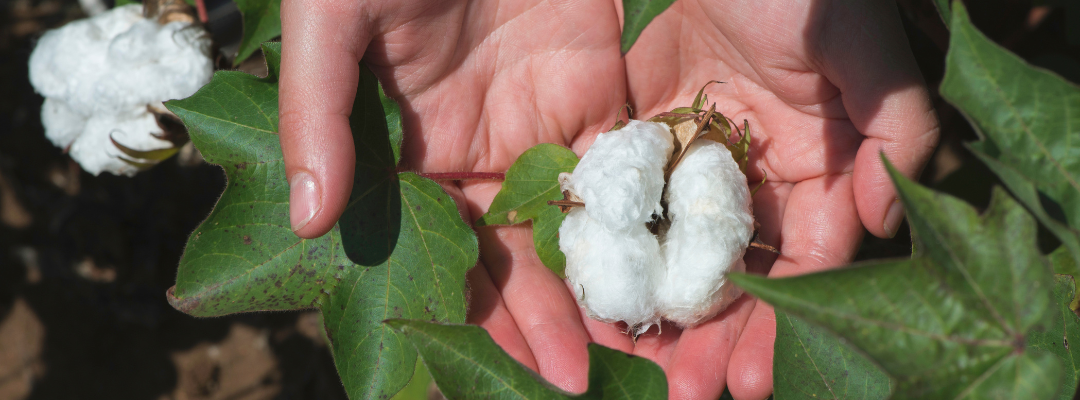The cotton futures market is on the decline, having experienced a dramatic selloff starting June 17, 2022. As shown in Figure 1, December 2022 Cotton Future prices dropped from the May 17, 2022 high of 134 cents per pound to around 120 cents per pound on June 15, 2022, only to be followed by a plunge to a low of 91.2 cents per pound on June 28, 2022. The selloff has created concerns among cotton producers about this year’s profitability. What was the cause of the recent market plunge?
Figure 1. December 2022 Cotton Future Prices for the Past Year

Since September of last year, the cotton futures market experienced an inflow of speculative money, which pushed cotton prices to levels that exceed those indicated by supply and demand fundamentals (more information here). The flow of speculative money in and out of cotton markets makes prices unpredictable and volatile. However, with the recent speculative money leaving the cotton market, prices fell sharply, possibly with a temporary correction below the price supported by global cotton supply and demand fundamentals. What caused this sudden withdrawal of money from the cotton market?
Cotton and cotton-related products are discretionary items. Thus, cotton prices tend to follow the economy, with cotton prices rising during economic growth and declining during recessions. Many economic indicators point to the direction of a global economic slowdown, with the possibility of a recession in the United States. The S&P 500 index, one of the main indexes for the U.S. stock market, recorded a 20% drop in June from its January closing peak to confirm a bear market. Meanwhile, soaring inflation put extra pressure on consumers. The annual inflation rate in the U.S. accelerated to 8.6% in May of 2022, the highest since December 1981. Embedded in inflation, energy prices rose 34.6% and food costs surged 10.1%. Severe supply disruptions caused by geopolitical tension and Covid-19 reduced global economic productivity, hindered the ability to meet consumer demand, which resulted in an economic slowdown and high inflation rates globally.
The soaring inflation, especially for food and energy, reduced consumer confidence and forced the consumer to rebalance their budgets for spending. This could lead to consumers reducing the purchase of apparel and apparel-related products. Meanwhile, in response to high inflation, the Federal Reserve increased the federal funds rate to tamp down inflation – on June 15th the Federal Reserve increased interest rates by three-quarters of a percentage point, its largest rate increase since 1994 and the third rate increase in 2022. The Federal Reserve’s commitment to bringing inflation back down to its target of 2% indicates a strong possibility of further interest rate hikes in 2022 and 2023. The rising interest rate further accelerated the appreciation of the U.S. dollar, as the U.S. Dollar Index reached its three-year high at 104.01. Cotton is a global commodity; on average, over 80% of cotton produced in the U.S. is exported. The appreciation of the U.S. dollar increases prices paid by foreign consumers and makes U.S. cotton less attractive. All of these concerns contributed to the withdrawal of money from the cotton market and the recent decline in cotton prices from the peak.
The impact of this year’s global cotton production on prices is yet to be seen. High cotton prices during the planting season attracted more cotton planted acres globally. However, the Southwest United States, the major cotton-producing region in the U.S., is experiencing severe drought and is anticipating lower production this year. Globally, the USDA June forecast for cotton production could reach 121.3 million bales, 4 million bales larger than last year. The projected USDA global ending stocks are maintained at a relatively low level at 82.7 million bales. Lower cotton production in the U.S. could provide some support for harvesting prices domestically. However, with a higher global cotton production forecast, global cotton prices could drop further if the global economy enters a recession and stock markets continue to experience losses for the remainder of this year.
Producers who are not in a marketing pool are encouraged to develop a marketing plan to protect the harvest price, as it is risky to lock in high input prices without a marketing plan for the crop. In addition, producers can adjust their harvest price expectations and manage their in-season production decisions accordingly.
Liu, Yangxuan. “What Is Behind the Recent Cotton Futures Market Plunge?”. Southern Ag Today 2(29.1). July 11, 2022. Permalink

